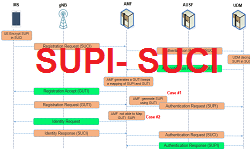mSAP: New PCB Technology to be used in 5G Smartphone
The light, small and multi-functional electronic products have led to the development of the printed circuit board on which the lines and vias depend on the high density interconnection (HDI), but it still cannot meet the requirements of the future development. 5G’s massive processing capacity requires more battery capacity, as well as more sophisticated processors and components, higher resolution displays, etc., To fulfill these demands, the amount of available space for HDI PCBs within 5G smartphones will needs to be significantly reduced.
Let us have a look on conventional PCB process, and mSAP PCB process.
Conventional Subtractive PCB Process:
In a subtractive process, fine lines are formed by coating the copper layer with an etch resist, applying photolithography to image the areas where the copper should be retained, and etching away the un-imaged material.
The main drawback of this approach is that the chemical treatment used to vertically etch the lines will also dissolve the copper in a horizontal direction along the trace walls. In a cross-section view, the resulting traces will appear trapezoidal in shape (with sides at a 25-45 degree included angle from the base).

These trapezoidal conductor shape could be an impedance reliability issues for 5G mmWave frequencies.
mSAP Additive Process:
An alternative to the subtractive process is the mSAP (semi-additive fabrication process), which enables a transition to much finer circuit geometries.
With mSAP, a much thinner copper layer is coated onto the laminate, and plated in the areas where the resist is not applied—thus, the “additive” nature of the process. The thin copper remaining in the spaces between conductors is then etched away. Whereas trace geometries are chemically defined during subtractive processes, mSAP allows trace geometries to be defined via photolithography. The traces are therefore formed with much greater precision, in straight vertical lines, yielding a rectangular-shaped cross-section that maximizes circuit density and enables accurate impedance control with lower signal loss.

Trace Width Reduction Trend
With mSAP, the trace width is reduced and thus more electrical connections are possible on the same area on the PCB, thus contributing smaller size PCBs.

Thinner conductors with controlled shape may provide some benefits in terms of signal integrity due to improved cross talk and noise ratio.
Although the semi-additive process (SAP) used in the IC substrate board can realize more precise circuit fabrication, but there is a problem that the manufacturing cost is high and the production scale is small, thus restricted to ICs as of today.
It is hoped that the majority of workers in PCB industry will continue to work hard to improve the mSAP process capability, products and pave the way for the better realization of new technologies such as Internet of Things and 5G.
Related post
- 5G NR RACH Preamble Types: Long and Short Preambles
- NR-Logical Channels,Transport Channels and Physical Channels Mapping
- NR Radio Network Temporary Identifier (RNTI)
- 5G New Radio Throughput Capabilities
- 5G New Radio Spectral Efficiency



